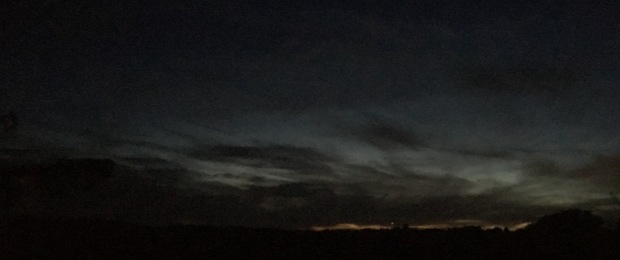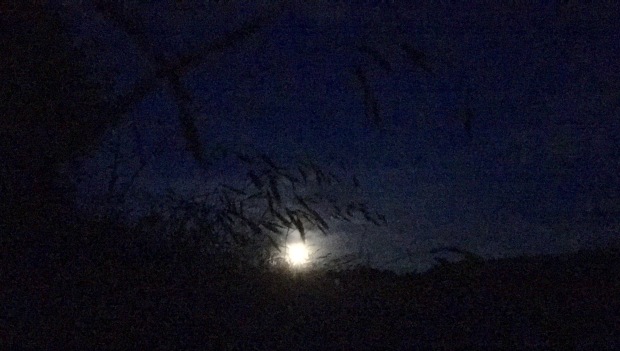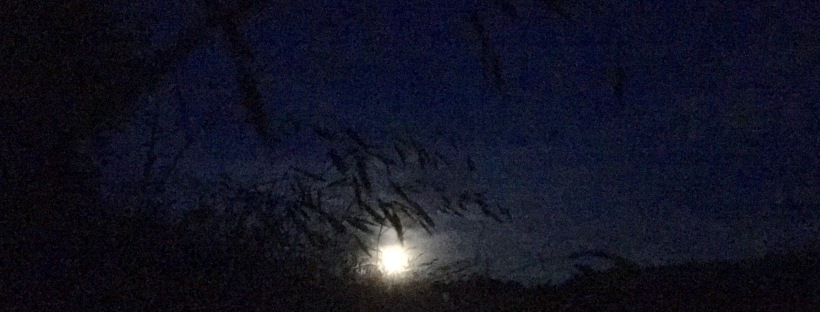I’ve been meaning to collect meadowsweet and yarrow for a week or so. Meadowsweet especially as it’s been around for a while whereas the yarrow has some time yet, I think. With one thing and another it wasn’t until half ten on a Monday night that a slightly exasperated me set out into the woods to collect some. That night turned out to be such a rare treat, emphasised by my lack of expectation. I had never heard a nightjar before but as I walked further into the woods the repetitive cricket-like churring became louder and louder. The bird was in the bracken and I skirted round it passed the stream to where the meadowsweet grows. I didn’t find any yarrow but the meadowsweet, at chest height with a heady fragrance, was easy to feel for in the half light. I snipped flossy heads into sanitised centrifuge tubes. Something strange flew overhead that I still can’t place. It crackled and half roared like dragging a foot over gravel, reminiscent of a flare firing before it pops. It was maybe a bat or a large insect but not one I’m familiar with. I carried on over the hill and looped back round towards home. A juvenile tawny owl called and the soundless silhouette of the owl’s steady wing beat moved across the sky. I returned to the nightjars, which were now louder than before. One rose from the bracken, poised like a kestrel against the last light in the sky, before settling again into the undergrowth. One clapped its wings and moved its position when I got too close. As I headed home the full moon shone bright through traces of clouds and unseen creatures shifted their position, given away by the dry leaf litter.


That night I made a fresh starter for the elderflower and rose captured yeast with lightly hopped wort and also made a starter for some of the WLP 566 Saison Ale II, saved from last brew day. The dog rose had a moderate film pellicle on it and smelt of roses and perfume. I feel like that is stating the obvious but the dog roses had no significant scent when I picked them and are now two propagation steps removed from the flowers. Do any flower/fruit aromas come from the esters these microbes create? Clearly, I don’t know what I’m talking about and am stabbing in the dark (recently I picked up a satsuma with a mould bloom on it and the orange ester smell was amazing). The elderflower was floral but less distinct. One had a stonking pellicle, wrinkled and holding large bubbles. The other had a thin film.
That night I also racked the “Braison” off the strawberries. I had used 1.2kg of strawberries having read that there are 5g of sugar in 100g of strawberries. This quantity seemed in line with some recipes in Greg Hughes’s “Home Brew Beer”. This would have added 60g of sugar plus 140g of honey making the OG 1.062. Unfortunately I think the “Braison” is a failure. I knew I had put too much grain of paradise in and the flavour was very phenolic and reminiscent of pencil lead. I will leave it alone for a month and decide then whether to ditch it.
I squeezed in a brew day on Sunday (23 July). I tried to keep it fairly simple with a 20litre batch following the Burning Sky Saison Provision (one of my favourite beers), from Euan Ferguson’s Craft Brew. My recipe was as follows:
OG:1.052 FG:1.009 ABV:5.5% SRM:4 IBU:13 20L batch
85% Pilsner malt
5% wheat malt
5% spelt malt
5% caragold
16g East Kent Golding (5.92% AA) at 60mins
8g East Kent Golding at 15mins
17g each of Saaz, Celeia and Sorachi Ace at 0mins
The mash was held for 60mins at 65 deg C with a water grist ratio of 2.6 l per kg. 0.5g each of calcium carbonate and magnesium sulphate were added to the mash to improve my water profile for a heathy fermentation. pH was 5.5. I did an iodine test at the end of the mash to try something new and the starch was converted. 22l were sparged, which in retrospect was too little as the gravity was 1.020 and I only ended up with 18l at the desired gravity post boil and after liquoring back. This was enough however to fill four demijohns. Rather than chilling in the boiler I transferred to a bucket and chilled in there, which achieved a far better cold break. I struggled to separate the wort from the trub but I’ve read conflicting report of whether this needs to be done.
The four demijohns had rose captured yeast, elderflower 1 and 2 captures and WLP 566 Belgian Saison Ale II added respectively. The pellicles were really impressive again; wrinkly on the rose and bubbly on elderflower 2. Elderflower 1 had a very thin film.

















